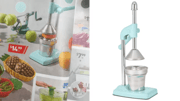
Housing is a key determinant of physical health. Housing conditions can increase or reduce the risk of problems including respiratory illness, heart disease and injury.
Improving housing conditions would see an improvement in health at the population level and reduce health-care costs.
In a study yet to be peer-reviewed, our research team has estimated eradicating mould and damp in Australian housing could cut health expenditure by A$117 million per million people, and increase income by $174 million. These figures represent 0.5%–2.1% of annual health spending and 0.08%–0.36% of gross domestic product.
We also estimated tackling mould and damp could result in an extra 4,190 health-adjusted life years (the number of years a person can expect to live in good health) per million people over 20 years. This is equivalent to about 1.5 healthy days per person. We’d see the greatest gains among people who are most disadvantaged.
In Australia and several similar countries, the conditions and location of many people’s homes are heavily influenced by housing affordability and the failure of successive governments to treat housing as a human right. Instead, it’s often been treated as a wealth-generating asset.
But it’s time to change things. The significant effects of poor housing on health, and a growing body of evidence indicating healthier homes could lead to tangible improvements, build a strong case for prioritising healthy housing policy in Australia.
Respiratory health
Numerous studies have established strong links between poor housing quality and increased risk of respiratory issues.
Exposure to damp, mould and poor ventilation in homes has consistently been associated with higher rates of asthma, allergies and other respiratory conditions, particularly among children and vulnerable groups.
Cold and poorly insulated homes can exacerbate respiratory symptoms. Meanwhile, overcrowding may make it easier for respiratory infections to spread.
Indoor air pollutants, from sources such as building materials and inappropriate heating systems, can further compromise lung function and respiratory health.
On the flip side, interventions to improve housing conditions – such as enhancing insulation, reducing dampness and improving ventilation – can positively affect respiratory health.
For instance, studies have shown retrofitting homes with proper insulation can lead to significant reductions in asthma symptoms and hospital admissions for respiratory conditions.
Heart health
The conditions and location of housing are also linked to cardiovascular health (for example, blood pressure) and metabolic health conditions such as diabetes and obesity.
Cold and damp housing conditions can increase the risk of disease through their effect on blood pressure. Exposure to low indoor temperatures can lead to high blood pressure, a major risk factor for conditions including heart disease, stroke and type 2 diabetes.
Poor insulation and energy inefficiency can exacerbate these effects, especially in regions with cold climates or during winter months.
Conversely, changes to housing that make temperatures more comfortable – such as installing insulation or efficient heating and cooling systems – could reduce disease risk.
For example, studies have shown reductions in blood pressure and fewer hospital admissions following interventions designed to warm homes.
Where we live also matters. For instance, the location of our home determines how much we’re exposed to air pollution – a risk factor for a range of diseases.
Access to green spaces and places to exercise near home is linked to reduced risk of diabetes, obesity and cardiovascular disease.
Injuries
Poor housing conditions can increase the risk of injuries such as falls and burns.
Inadequate lighting, uneven flooring, and poorly maintained or constructed stairs are common hazards that increase the risk of falls, especially among older adults. What’s more, the absence of proper accessibility features in homes can lead to increased risk of injuries among people with disabilities.
Studies have shown low-cost housing modifications – such as installing grab bars and handrails, improving lighting and childproofing measures – can markedly reduce injury rates.
Faulty electrical wiring and inadequate fire safety measures, such as the absence of smoke detectors, increase the risk of injuries and deaths. When New South Wales made smoke alarms compulsory in all homes in 2006, hospitalisation rates for residential fire injuries decreased by an estimated 36% annually.
But there’s variation in smoke alarm legislation across different Australian jurisdictions. And challenges remain with enforcement and ensuring alarms are functional.
Failing to act will cost us
Lower-income households, and especially renters, are at higher risk of the health consequences of poor housing. This contributes to health inequities across society.
In a new paper published in The Lancet Public Health, we present housing as a key social determinant of health. We highlight how affordability, security and suitability of housing shape health and wellbeing.
At the same time, our recent modelling and other research internationally provide compelling evidence that improving housing could have substantial benefits.
These models consistently show targeting mould, damp and cold in housing not only improve health outcomes, but also offer significant economic gains. This positions housing improvement as a cost-effective public health strategy.
As well as interventions to directly improve housing conditions for the homes that most need it, we also need structural reform of our housing systems. We must ensure everyone has access to an affordable, secure and suitable home.
This article is part of a series, Healthy Homes.
This article is republished from The Conversation under a Creative Commons license. Read the original article.







